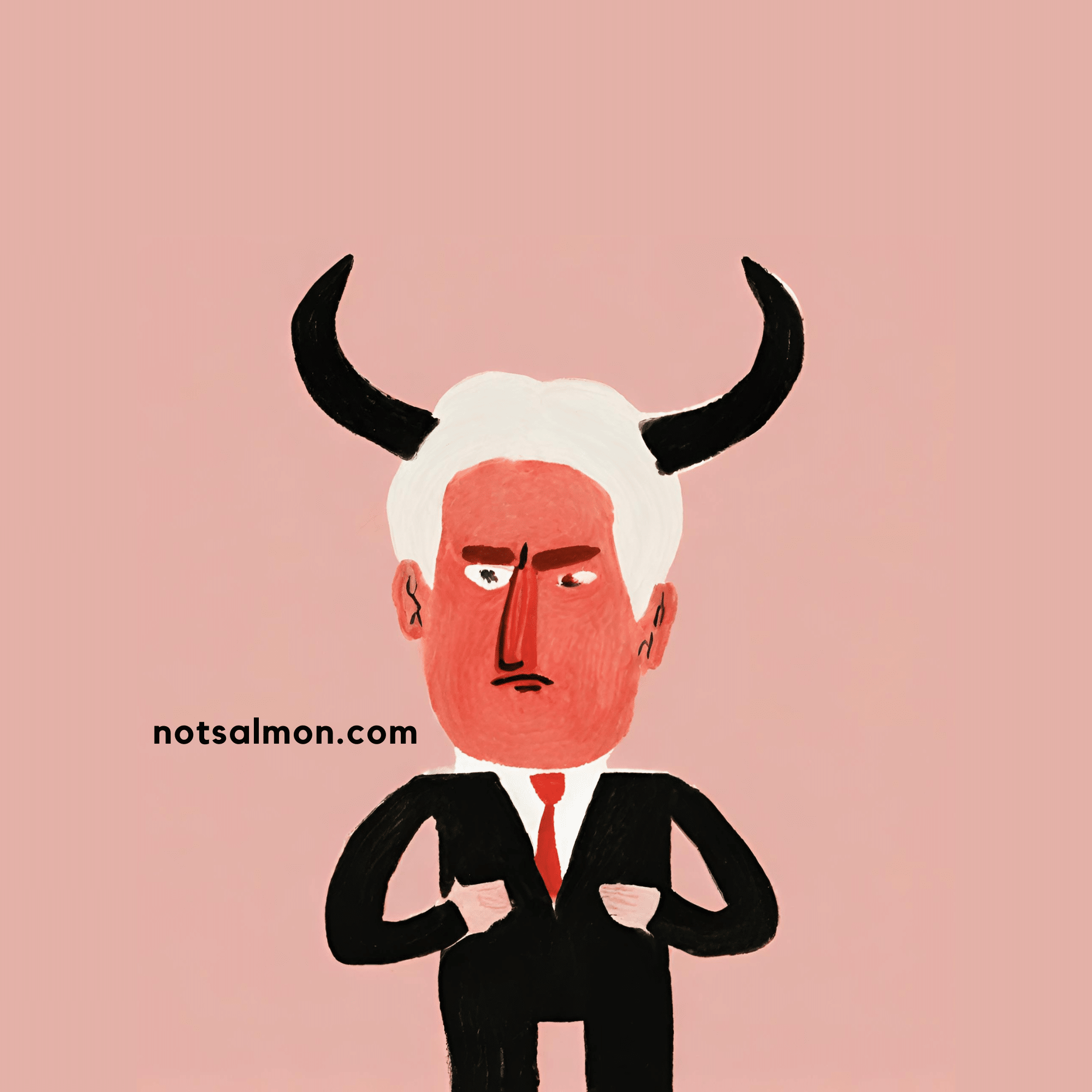 If you want to develop effective leadership styles, you will want to recognize the good from the bad from the “please stop” methodologies. Read on…
If you want to develop effective leadership styles, you will want to recognize the good from the bad from the “please stop” methodologies. Read on…
We’ve all had a range of bosses. The memorable ones. Forgettable ones. And the ones we secretly (or not-so-secretly) googled “how to deal with difficult bosses” about.
Leadership, like artisanal coffee, comes in various blends and flavors. Some are smooth and invigorating, while others are, well, an acquired taste.
I’m writing about this topic because I’m a leading Behavioral Change Expert and executive coach for entrepreneurs and business people I help individuals and companies to manage challenging situations – and grow from their experiences – so they create happier and higher achieving results.
Over the years of working with executives and companies, it’s become very clear that leadership, in all its forms, impacts the work culture, morale, and output of a team.
With this in mind I put together this article about the 9 most common leadership styles.
The 9 Most Common Leadership Styles
Let’s dive into this quick rundown of leadership styles.
3 Good Leadership Styles:
1. The Mentor:
This leader doesn’t just instruct; they inspire. They’re the Yoda to your Luke Skywalker, guiding with wisdom, patience, and the occasional cryptic advice. Their legacy isn’t just in results, but in the leaders they help cultivate.
Psychological Underpinnings:
This leader often thrives on altruism and the satisfaction derived from helping others grow. They might have had a mentor themselves, shaping their understanding of effective guidance.
Case Study:
Consider Satya Nadella at Microsoft. He transformed the company culture by focusing on empathy and growth mindset, acting as a mentor and inspiring employees to learn and innovate.
- Reminder: Blend their wisdom with your own perspectives.
- Working with a Mentor: Show eagerness to learn, but don’t be afraid to politely challenge their ideas or propose new ones. This dynamic can lead to a richer learning experience for both of you.
2. The Democratic Diplomat:
A beacon of fairness, they invite opinions, foster open discussions, and often make decisions by consensus. They’re like that referee everyone respects because they make sure every player gets a fair shot.
Psychological Underpinnings:
These leaders value inclusivity and believe in the collective intelligence of the group. Their approach often stems from a high level of emotional intelligence and a democratic value system.
Case Study:
A great example is Sundar Pichai of Google. He’s known for encouraging open discussions and involving his team in decision-making, fostering a sense of shared purpose.
- Reminder: Their fairness is admirable, but in seeking consensus, decisions can stall. Sometimes, too many cooks (or opinions) can spoil the broth.
- Thriving Under a Diplomat: When offering opinions, be concise and constructive. If decisions are dragging, don’t hesitate to gently nudge your leader towards a verdict.
3. The Visionary:
With an eye firmly on the horizon, they inspire the team with a clear and compelling vision of the future. They’re the dreamers, the Elon Musks of leadership, always gunning for the next big thing.
Psychological Underpinnings:
Visionary leaders are often driven by a strong sense of purpose and the desire to make a significant impact. Their forward-thinking nature might stem from a combination of high-level abstract thinking and intrinsic motivation.
Case Study:
Steve Jobs, co-founder of Apple, epitomized this style. His ability to foresee future trends and inspire others with his vision was a key factor in Apple’s innovation.
- Reminder: Their future-focused mindset is infectious, but they can be so starry-eyed about the future that they trip over the present. The day-to-day can suffer.
- Aligning with a Visionary: Help them stay grounded by tactfully highlighting practical steps towards their grand vision. Be the Watson to their Sherlock – the realist to their idealist.
3 Bad Leadership Styles:
1. The Micromanager:
Ever felt like someone’s watching every keystroke you make? That’s the micromanager. They love details. Adore them. So much so, they often miss the forest for the incredibly specific trees.
Psychological Underpinnings:
This behavior often stems from anxiety, a need for control, or a lack of trust in others’ abilities. It can also be a result of perfectionism.
Case Study:
In a small tech startup, a CEO’s micromanagement led to employee burnout and high turnover. Only after a leadership coaching intervention did the CEO learn to delegate effectively.
- Reminder: Annoying? Yes. But their attention to detail can also be a strength in certain scenarios, especially in fields where precision is key.
- Coping with a Micromanager: Document your work meticulously. Anticipate their concerns and address them proactively. Over time, you might just earn their trust.
2. The Seagull:
They fly in sporadically, often making a lot of noise, dump a lot of… decisions and opinions on everyone, and then fly away, leaving the team to deal with the aftermath.
Psychological Underpinnings:
This style might emerge from a combination of disorganization, a hands-off approach, or being overwhelmed with their responsibilities.
Case Study:
A marketing director known for this style created chaos in campaign planning. The team, however, turned this into an opportunity for autonomy and excelled by self-organizing.
- Reminder: Their hands-off approach can be frustrating, but it also allows for autonomy. It’s your playground – make the most of it.
- Managing the Seagull Effect: Document decisions and seek clarification when they swoop in. When they fly away, take the reins confidently and lead your team with the autonomy you’ve been given.
3. The Ghost:
You’ve heard they exist. There might be photographic evidence. But they’re rarely seen, and even more rarely heard. Decisions? Guidance? You’re mostly on your own with this spectral leader.
Psychological Underpinnings:
Sometimes this is a result of disengagement, lack of confidence in leadership abilities, or being spread too thin with responsibilities.
Case Study:
In a retail company, the ghosting CEO’s absence led middle management to step up, fostering unexpected leadership growth within the team.
- Reminder: Like the Seagull, their absence offers you a stage to shine and develop leadership skills.
- Working with the Unseen: Be proactive. Make decisions and keep records to share with your spectral leader when they materialize. Show that you can steer the ship even when the captain is… well, ghosting.
3 “Please Stop” Leadership Styles:
1. The Mood Meteorologist:
Their mood dictates the office climate. Sunny one day, stormy the next. Pack an emotional umbrella because you never know what the forecast will be.
Psychological Underpinnings:
This leader’s mood swings may be due to emotional regulation issues or high-stress levels. They might be unaware of the psychological contagion of their moods.
Case Study:
A project manager with mood swings created a volatile environment. A team member’s initiative for regular feedback sessions helped the manager become more self-aware and stabilize the team’s climate.
- Reminder: Often, these leaders aren’t aware of their impact. They might be grappling with their own pressures.
- Weathering the Storm: Stay professional. If their mood affects your work, consider a calm, private conversation about how their demeanor impacts the team.
2. The Credit Claimer:
Remember that idea you pitched? Well, it’s theirs now. They bask in the glory of successes (even if they had little to do with them) and are swift to pass the buck when things go south.
Psychological Underpinnings:
This behavior often originates from deep-seated insecurity, a need for validation, or imposter syndrome.
Case Study:
A department head routinely took credit for the team’s ideas. An intervention by HR highlighting the importance of recognition led to a more collaborative and acknowledging leadership style.
- Reminder: Understanding the deep-seated insecurity root of their credit claiming can help you manage your reactions.
- Claiming Your Space: Document your contributions. Where appropriate, diplomatically highlight your role in successful projects, ensuring your efforts aren’t overlooked.
3. The Drama King/Queen:
Everything is a production. The office feels less like a workplace and more like a soap opera. Expect theatrics, cliffhangers, and a lot of “To be continued…”
Psychological Underpinnings:
This could stem from a need for attention, a lack of maturity, or being accustomed to chaos. Sometimes, it’s a misguided way of motivating others.
Case Study:
A sales manager loved creating urgency through drama. A coaching session helped them realize the stress it caused, leading to a more balanced approach.
- Reminder: It’s helpful to keep in mind that their dramatic flair is often masking deeper issues. And although empathy is key, boundaries are also essential.
- Curtain Call: Stay calm and don’t get sucked into the drama. Focus on facts and steer conversations towards constructive outcomes.
How To Develop A Good Leadership Style
I hope you enjoyed reflecting on these various leadership styles.
If this has whetted your appetite for more personalized guidance on leadership styles, don’t hesitate to reach out. I’d love to support you in becoming the leader you were meant to be. Set up a free Zoom exploratory call here.
P.S. Before you zip off to your next Internet pit stop, check out these 2 game changers below - that could dramatically upscale your life.
1. Check Out My Book On Enjoying A Well-Lived Life: It’s called "Your To Die For Life: How to Maximize Joy and Minimize Regret Before Your Time Runs Out." Think of it as your life’s manual to cranking up the volume on joy, meaning, and connection. Learn more here.
2. Life Review Therapy - What if you could get a clear picture of where you are versus where you want to be, and find out exactly why you’re not there yet? That’s what Life Review Therapy is all about.. If you’re serious about transforming your life, let’s talk. Learn more HERE.
Think happier. Think calmer.
Think about subscribing for free weekly tools here.
No SPAM, ever! Read the Privacy Policy for more information.
One last step!
Please go to your inbox and click the confirmation link we just emailed you so you can start to get your free weekly NotSalmon Happiness Tools! Plus, you’ll immediately receive a chunklette of Karen’s bestselling Bounce Back Book!


 If you want to develop effective leadership styles, you will want to recognize the good from the bad from the “please stop” methodologies. Read on…
If you want to develop effective leadership styles, you will want to recognize the good from the bad from the “please stop” methodologies. Read on…